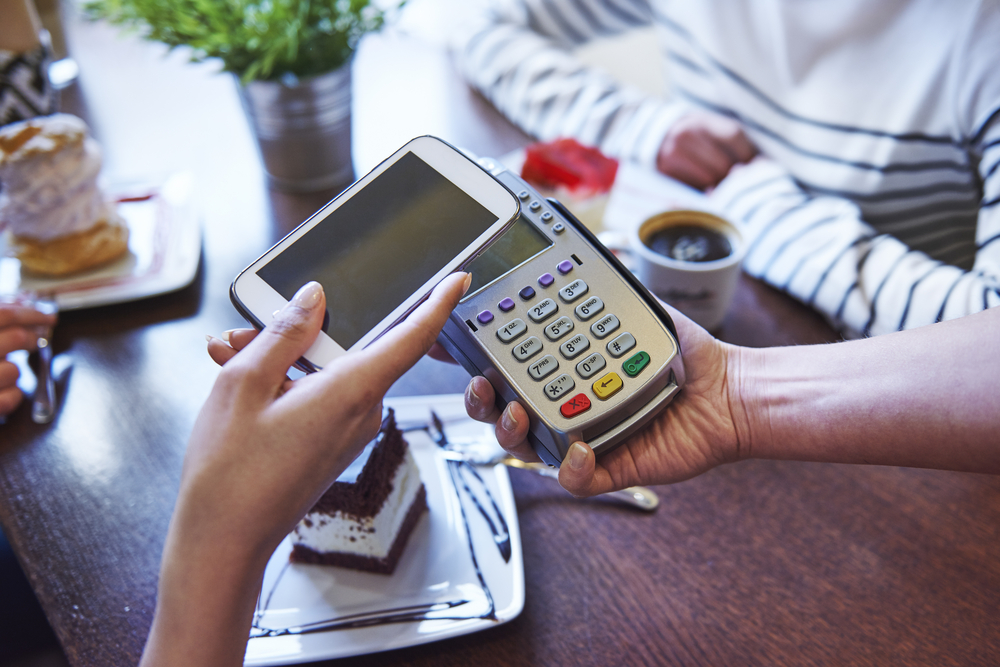
Mobile payments are gaining momentum in the UK. Apply Pay has an initial monopoly, Google recently announced its UK launch and Samsung is planning to follow suit later this year. Countries across the globe are increasingly moving towards cashless societies thanks to advances in contactless payments. The UK is a leader in contactless payments and, thanks to technology such as Oyster cards, mobile payments are catching on quickly.
Instead of carrying a physical wallet with cash and bank cards, mobile wallets are becoming an increasingly popular method of payment.
The death of the wallet
Mobile payment apps have added a new and convenient way for people to pay for goods and services. The total value of proximity mobile payments is set to see a significant growth of 210 per cent in 2016 and has the power to revolutionize the shopping experience, making payments more convenient and faster. It’s an attractive option for brands and customers alike as it makes the payment journey for the customer much more simple.
As these digital wallets gain market traction, banks could find themselves in trouble. There are more players entering the space. According to Bloomberg News, Walmart, Starbucks and even Chevron petrol stations are working on plans for their own digital wallets.
But the 'walled gardens' of Apple and Samsung Pay make it difficult to implement the systems and add extra costs to the merchants as they are only usable on the phones they manufacture. This significantly limits the systems customers can use. Other limitations include:
- Credit card based systems
- User data owned by Apple et al
- No options for customization
- Added fees
Beacon payment technology gets around these methods using a combination of phone-agnostic beacon technology and a phone app. This method allows banks and payment merchants to regain control through a white-labeled solution that is completely customable.
Banks are leading the charge
Tech-savvy consumers, world-leading smartphone penetration and progressive banks have kept the Nordics ahead of the game with mobile payments. In 2013, Danske Bank launched MobilePay to address the need for very simple money transfers. The ambition was to make transferring money to friends as easy as sending a text message. This app then evolved to a payment system for retailers using beacon technology with the app.
Dankse Bank’s mobile wallet was the third most popular app in Denmark and Norway (after Facebook and Facebook messenger) and over 90 million transactions by 2.8 million individuals were made through MobilePay last year alone.
Danske Bank’s MobilePay payments are now accepted in shops across Scandinavia, including McDonalds and Starbucks outlets, and all that is required of the customer is a free app that is installed on their iOS, Android or Windows Mobile device. Once purchases are scanned at the checkout and payment is requested, the mobile device is waved over the smart beacon with the app running. In response a customer is immediately shown the purchase amount and the app waits for confirmation through a simple pin and swipe gesture. In seconds a purchase is made without having to enter any amount manually or having to use a payment card.
Mobile payments platforms are providing retailers with an intuitive customer experience via inexpensive technology and removes costly merchant fees as the technology takes transactions direct from bank to retailers, changing the value chain.
Directly engaging with customers
By directly engaging their customers, banks can also create additional brand loyalty as well as providing a desirable feature to entice new customers.
The solution does not require technology and equipment that is expensive or difficult to access for retailers and it is intuitive to use and easy to understand for the end users. The payment is so easy and effortless: "They have all been mighty impressed by how easy and fast it is. People get really pleasantly surprised, and sometimes they have to try several times because they have a hard time believing that it really is that easy" says Danish supermarket Rema 1000’s project leader, Steffen Skov Larsen.
This disruptive technology has implications beyond ease of use for the customer and retailer. Because the technology takes transactions direct from bank to retailer, it changes the value chain by removing merchant fees, acquirers and payment service providers from the fee structure and comes with enhanced security so there is less chance of fraud or error.
Millennials opt for mobile first
Beacon technology gives banks and retailers the control to implement their own systems, creating bespoke white-labeled devices to the client’s specification with a custom payment system – outside the expensive walled gardens of Google, Apple and Samsung.
The problem for banks is that millennials who could become their new customers are deciding against conventional banking and choosing instead to bank through the growing number of mobile payment services.
If banks want a fighting chance to catch up with third-party mobile wallets, they’ll need a digital payment technology to do it.
Jonathan Duffy, managing director EMEA, Netclearance
Photo credit: gpointstudio / Shutterstock
Published under license from ITProPortal.com, a Net Communities Ltd Publication. All rights reserved.

